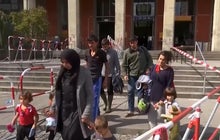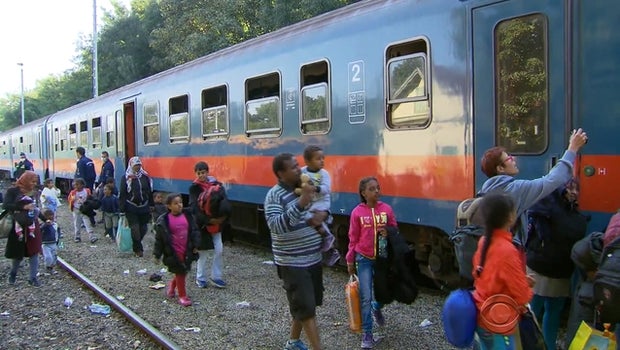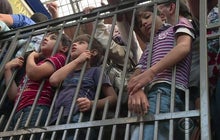The counter at Ditta Artigianale in Florence Francesco Lastrucci for The Wall Street Journal …
Espresso at Ditta Artigianale Francesco Lastrucci for The Wall Street Journal …
An open window at Ditta Artigianale Francesco Lastrucci for The Wall Street Journal …
'People drink espresso like medicine, just to wake up,' says Francesco Sanapo, co-owner of Ditta Artigianale. Francesco Lastrucci for The Wall Street Journal …
A barista prepares filter coffee with the 'V60' method at Ditta Artigianale. Francesco Lastrucci for The Wall Street Journal …
Coffee Collective in Copenhagen, Denmark Mikkel Heriba for The Wall Street Journal …
The simple interior at the Coffee Collective in Copenhagen Mikkel Heriba for The Wall Street Journal …
Espressos at the Coffee Collective Mikkel Heriba for The Wall Street Journal …
Coffee Collective has two locations with an on-site roastery, plus one at the airport to make sure travelers can get a great cup whether coming or going. Mikkel Heriba for The Wall Street Journal …
A pour over setup at Coffee Collective Mikkel Heriba for The Wall Street Journal …
London's Kaffeine, one of the first next-wave shops on the scene in 2009, has opened a second outpost and is hosting the third annual London Latte Art Smackdown this month. Lisa Linder …
A barista pours a drink at Kaffeine in London. Lisa Linder …
of
SHOW CAPTION HIDE CAPTION
fullscreen Sept. 29, 2015 4:01 p.m. ET
MORNING COFFEE, Florence, Italy: I planned to head for one of the espresso bars where elegant people toss back a dark brew in a tiny cup. I knew to pay first and hand the receipt to the barista. I knew to drink fast, on my feet, because only tourists pay extra to linger at a table. I knew not to drink anything with added milk after 11 a.m., noon, tops. If I ever felt close to sophisticated, it was in an Italian espresso bar.
I mentioned a favorite destination to my 25-year-old daughter. "We are not drinking that coffee," she said, her tone compassionate but firm. I followed her and her GPS out the door.
Moments later we were at Ditta Artigianale, a two-year-old coffee shop that is the unofficial headquarters of an Italian coffee revolution. It's part of a paradigm shift that started in Scandinavia and is moving across western Europe, as baristas on the Continent adopt U.S. drip-coffee techniques, and espresso-based drinks elevated by Australians come full-circle to their Italian birthplace and to neighboring nations.
Social media have enabled self-described "coffee professionals" around the world to share photos, recipes and advice. Pioneers in Copenhagen and Oslo were the first in Europe to import next-wave coffee—defined by the use of Arabica beans, lighter roasts that bring out nuanced flavors, and attention to sourcing—and Western Europe has followed suit.
"Each city has only a handful of shops that you'd say are doing a fantastic job," said Stephen Morrissey, winner of the 2008 World Barista Championship in Copenhagen and currently a consultant to the Chicago-based Specialty Coffee Association of America. "There's a huge vacuum. But it's an exciting time."
Nowhere is the vacuum greater than in Italy, which is ironic, given the country's status as the birthplace of espresso—and understandable, according to Francesco Sanapo, co-owner of Ditta Artigianale. "People drink espresso like medicine, just to wake up," he said of his countrymen, "not because it's a food product." Most European espresso is brewed with dark-roasted Robusta beans, a cheaper, hardier variety that yields a consistently strong, bitter brew commonly cut with sugar and milk. Purveyors of next-wave coffee have a different goal in mind: a range of flavors obtained from different growers, a natural sweetness and a bright, acidic flavor. "Not acid like battery acid," said Mr. Morrissey, "but acid like a mango. Sparkly, bright, zingy coffee."
'In Paris, they open a specialty coffee bar every month.'
This new breed of coffee can take some getting used to for Europeans, he said. Brian Ludviksen, customer support director at Counter Culture Coffee, a 20-year-old U.S.-based roaster, agreed. The standard European espresso is still "fuel for industry, not a quality beverage," he said.
Mr. Sanapo is well aware of how steep the learning curve is. The son of a coffee bar owner, he came to Florence when he was 20 and in 2008 decided to compete in Italy's national barista competition. He came in last. Undaunted, he decided to become "more scientific," to acquaint himself with the international coffee scene and learn "new process, new variety, the places of origin." The next year he placed second, just a point off first. In 2010 he won, 100 points ahead of his nearest competitor, the first of three victories before he retired from competition.
Mr. Sanapo has since become Italy's leading coffee zealot. He just consulted on a train-station coffee outlet in the hope that it will be better than its handful of mediocre competitors, and he has been known to talk skeptical customers into trying an espresso in three distinct sips, accompanied by his running commentary about how and why the flavor changes with each swallow.
Elsewhere coffee culture is evolving faster. London's Kaffeine, one of the first next-wave shops on the scene in 2009, has opened a second outpost and is hosting the third annual London Latte Art Smackdown this month. "In Paris, they open a specialty coffee bar every month," said Mr. Sanapo, longingly. "It's what will happen in five years in Italy."
BUZZED ABOUT // EUROPE'S TOP SPOTS FOR NEXT-WAVE COFFEE
BARCELONA | Nomad Coffee Lab & Shop
The downtown Lab, which lives up to its name, offers workshops and tastings as well as a dignified assortment of drinks, beans, equipment and books. If you want more, visit the roaster in the Poblenou neighborhood to watch beans start their journey toward brews, and taste as you do so. nomadcoffee.es
FLORENCE | Ditta Artigianale
New addition on a longtime street of food dreams, anchored by Gelateria dei Neri and the sandwich artistry at All' Antico Vinaio. If Francesco Sanapo is around, you might get an enthusiastic tutorial along with your espresso or flat white (espresso with steamed milk microfoam) or V60 pour-over (as pictured below right). dittaartigianale.it
LONDON | Kaffeine
There are two outlets of this "Australian-style café" (one is pictured above right), which proudly shares everything from the type of espresso machine, grinder, beans and cups it uses to the fact that every barista has a minimum of three years continuous experience. kaffeine.co.uk
LONDON | Prufrock
Co-director Gwilym Davies was 2009 world barista champion. Prufrock offers classes on barista skills, grind and brew techniques, and the honing of sensory skills. Or you can just have coffee and a bite in the combination café/training center. prufrockcoffee.com
PARIS | Café Loustic
Here they eschew the Australian flat white but offer all the other usual suspects, using an ever-changing array of micro-lot coffees and a renowned roaster in Antwerp. cafeloustic.com
COPENHAGEN | Coffee Collective
Two locations with an on-site roastery, plus one at the airport to make sure travelers can get a great cup whether coming or going. The Jaegersborggade outlet was Copenhagen's first open roastery; this is one of the places where it all began. coffeecollective.dk
COFFEE CLUES // HOW TO HUNT DOWN A WORTHY CUP
There are serious coffee shops opening all the time; you just have to know what to look for. A few telltale signs, per champion barista Stephen Morrissey and Brian Ludviksen of U.S. roaster Counter Culture Coffee:
SERIOUS NAMES | Look for shops with the word "lab" or "artisan" in the name. London bends the rule with the occasional outlier, like Tina, We Salute You, but in general, restraint is a clue.
A MENU OF COFFEES FROM A VARIETY OF SUPPLIERS | "If they say we have one coffee from Colombia, one from Ethiopia, one from Honduras, that's effective," said Mr. Morrissey. "It's like wine—you know all wines don't taste the same. It doesn't guarantee a fantastic cup, but it does say they're of the serious coffee world."
THE POUR-OVER BAR | This is a narrow frame that holds individual filters. Your cup goes underneath the filter, the freshly-ground coffee goes into the filter, and a patient and exacting barista pours hot water over the coffee, very slowly and carefully. Four minutes later, you have your drink. Any place that has a pour-over bar values quality over efficiency. "If I'm anywhere outside the U.S. and Canada and they have drip coffee by the cup," said Mr. Ludviksen, "I will think that they're trying to stay cutting edge, and probably in tune with global coffee culture."
SPECIALTY EQUIPMENT THAT LOOKS LIKE OVERSTOCK FROM A 1950S SCI-FI MOVIE There's the siphon, the V60—a better-engineered version of the standard single-cup filter—and the ubiquitous skinny-spouted teapot to modulate the flow of water on a pour-over. These places also exhibit a pervasive fondness for Acme & Co. coffee cups of all sizes.
MINIMALIST DÉCOR | Look for assertively sans-serif interiors, perhaps bare wooden tables and white walls—a nod to the Scandinavian influence on next-wave coffee as well as a conscious turn away from the cluttered coziness of "the coffee shop in 'Friends,' " according to Mr. Morrissey. "The vibe in the U.S. in the 1990s was coffee as a functional drink, couches and chairs, then laptops and studying—a social glue, but not so much about the coffee." Now it's about the coffee.
Source:
Europe (Finally) Wakes Up to Superior Coffee
 ShutterstockAmsterdam was one of the destinations that made the list.
ShutterstockAmsterdam was one of the destinations that made the list.




